Newspapers 1970-1979
 MY FIRST PUBLISHED WORK
MY FIRST PUBLISHED WORK
From 1970 until 1976, my writing consisted mainly of fiction and some non-fiction for home-produced magazines (called Strange & Unknown, The Warthog Reader, and Mystery Magazine). I entered college in 1974 – New York University – but it wasn't until 1976, when I transferred to Columbia University, that I began writing professionally for the Columbia Daily Spectator. I got my gig there because I was angry about a review by George Stevenson of the horror film Burnt Offerings. It so missed the point of the movie that I went into the editor's office and complained – quite angrily – about it. They asked me if I could do better and then assigned me a movie review of The Slipper and the Rose: The Story of Cinderella. I don't know if it was better but that became my first published piece of writing. For the next two years, I wrote about all my favorite subjects – Sherlock Holmes, James Bond, Tarzan, and The Prisoner, among others – as well as subjects in which I had little interest. After graduating, my newspaper work continued at a trio of community papers: The Westsider, The Chelsea Clinton News, and The East Side Express, where I learned to report about anything. That was a big help at my first job as a magazine editor at Firehouse.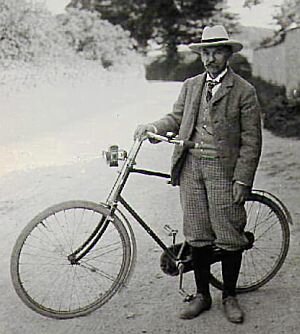
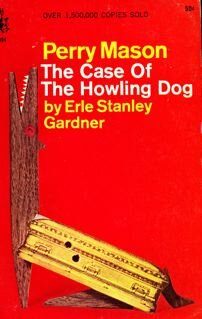
A Dying Breed
[[wysiwyg_imageupload:991:]]
Norman Thomas: The Last Idealist
by W. A. Swanberg (528 pp.,$14.95) Scribners.
Norman Thomas: The Last Idealist is an excellent, engrossing book about an excellent, engrossing and, for my generation, all but forgotten man. Since Thomas so often espoused the causes of youth this obscurity is especially unfortunate. Therefore, W. A. Swanberg's new biography comes at a very appropriate time. If it does nothing else, it shows how effective a man of principle can be in a world where political.expediency usually comes first.
It ould be argued that Thomas was one of the last of that odd breed, the honest politician. It could also be argued that Thomas' success at being honest was what led to his failure at being a truly successful politician (the kind that wins elections). He was the Socialist Party's candidate for President six times. He lost each race – the sixth and final one in 1948 by a landslide. And yet, paradoxically, with each election his prestige rose.
However, the paradox almost disappears as Swanberg presents the man' through his speeches, letters, diaries and -through the eyes of his friends, enemies and relatives. A charming individual and a commanding speaker, Thomas said what he believed even when he knew its potential unpopularity. The majority of the people wouldn't vote for him because of his views, but they could respect and believe him because he so freely gave them.
"I cannot believe," he said during World War I, "that democracy is a garment that can be taken off and put ill mothballs for future use or that you can secure democratic ends by Prussian methods of which the latest example is the legislation which makes the Postmaster General judge . of what the American people shall read."
This belief that principles were not something that could be molded to fit the moment and had to be consistent and deeply ingrained .to be effective was characteristic of Thomas. It also gave him his particular insight as' he was rarely motivated by personal or party needs. He refused to see things in purely black and white terms and felt that to be really practical was to be really principled.
Time bore him out, as America's "bending the truth" policies (which he vigorously opposed, saying, "What's more than truth? A lie? ... And what sort of propaganda for democracy is this?") led it further and further into foreign policy and domestic entanglements-most of which Thomas had foreseen.
He was one of the first to worry about American involvement in Indochina and was one of the earliest anti-war critics when we actually did get -involved. He expressed concern for foreign peoples' rights ("In all the discussion of the future of Indochina everybody has been mentioned except the Indochinese"), as well as for that: rights of those in the U.S. He was an early advocate of trade unionism (and later, a strong critic of the same unions for their abuses) and showed concern for birth control, energy conservation and the mentally ill. He was critical of the government for its lack of action regarding racial discrimination, and was also quite vocal on such diverse topics as freedom of the press, divorce laws, nuclear disarmament, campaign financing laws, and the admission of Red China to the U.N.
All of these causes were motivated by what Thomas felt·was a practical necessity, world survival, and also by what Swanberg analyzes as a kind of compulsion. Injustice or error so disturbed him mentally or emotionally that he was compelled subjectively to speak out against it," even when he knew it would do no good.
This sort of analysis appears throughout the book and the author successfully hits on all the important facets of Thomas' character; his charm, eloquence, pride, optimism and wit – all factors which enabled him to survive disappointments that might otherwise have overwhelmed him.
When nearly blinded in his old age, for example, "he seized a round object and gnawed at it before his daughter could tell him that it was not a cookie but a cork coaster. 'My God!' he said with relief, 'I had begun to doubt your cookery!'" Others might have been embarrassed, but' Thomas saw the humor in the situation and ignored the pathos. This kind of attitude constantly helped him keep his perspective on himself, on others, and on events.
Norman Thomas: The Last Idealist is intelligent, comprehensive, balanced and highly readable. It doesn't sentimentalize, but rather presents a fascinating picture of a .complex man who had a faith in man's basic intelligence that many politicians lack.
Paradoxically, Thomas' greatest strength-his concern for others-was also his greatest weakness. As Swanberg says, "He ... seemed inherently unable to confine himself to his central purpose, to ward off the many appeals for his attention which less sympathetic men instantly declined or referred to aides. .. Bad treatment ot:: anyone by anyone distressed" him, but it was worst of all if someone was· mistreated by a branch of government that was supposed to protect him. He was invariably spending valuable time looking into the case of some man said to be unjustly imprisoned, someone claimed to be falsely confined in a mental institution, someone in a snarl with the immigration authorities or even a widow in need of food or hospitalization." In a time when people' are too oten concerned only with themselves we could use more flawed men like Norman Thomas.
COLUMBIA DAILY SPECTATOR, November 30, 1976
Akira Kurosawa
Swords of the Orient
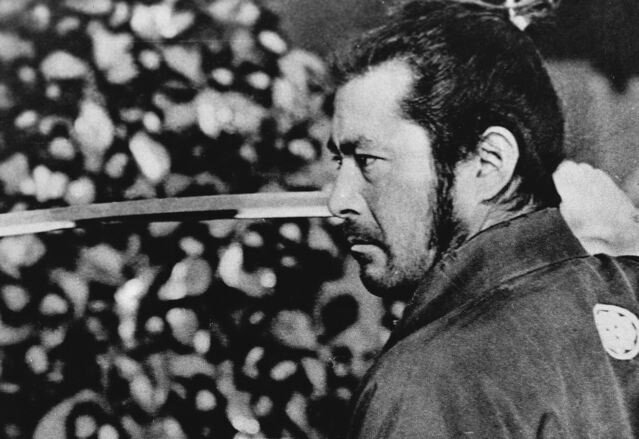
Toshiro Mifune in Sanjuro: fastest sword in the east.
By TOM SOTER
from the COLUMBIA DAILY SPECTATOR, April 19, 1977
Japanese movies have gained a bad reputation in recent years through the efforts of such films as Godzilla vs. Megalon, King Kong vs. Godzilla, and Godzilla vs. the World (among others). That's too bad, because the Japanese have made some excellent movies, and not only for the art-house fans.
Foremost among these is the work of Akira Kurosawa. Since his first movie in 1943, he's directed 26 films, ranging from gangster melodramas, and human relationship pieces, through samurai epics. In all these genres he's shown an uncanny knack for fascinating and understated character revealing a lot about Japanese customs and Japanese humor, as well.
His best known film is Rashomon, an exploration of truth,. which was released here in the early 1950's and which then caused quite a stir. Before it, no one knew that the Japanese even made movies, let alone ones of the caliber of Rashomon. Today, it is interesting for these historical reasons, but hardly as rewarding or entertaining as The Seven Samurai, Yojimbo, or Sanjuro. The latter two films star Toshiro Mifune as a samurai for hire, a sort of Japanese Clint Eastwood. However, where Eastwood stonefaces his way through most of the spaghetti westerns, Mifune brings both wit and charm to his taciturn loner who sets about cleaning up the bad guys as the "fastest sword in the east" (to coin a phrase).
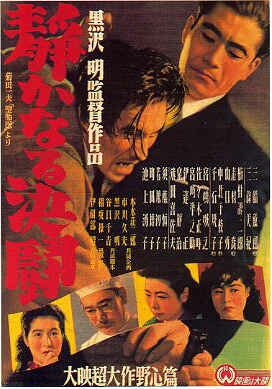
Toshiro Mifune in The Quiet Duel.
The samurai film is to Japanese audiences what the Western is to Americans, and it's no surprise that Kurosawa is a big John Ford fan. His staging and use of the screen space is remarkable; at times one feels as though one were watching an unlikely ballet of violence. And Mifune has a grace about him that is seemingly belied by his rough appearance.
In addition, Kurosawa manipulates his characters and story-line excellently, and audiences who have only been exposed to the slow-paced works of directors like Ozu are surprised at how gripping and Western-seeming films like Yojimbo are.
"In Kurosawa," Japanese film expert Donald Richie once explained, "realism reaches its fullest expression. At the same time, however, the realism is controlled and tempered by a style which, though personal and contemporary, is part of the Japa.'lese aesthetic. "
In Yojimbo and Sanjuro, its sequel, all three of these qualities are evident. And beca use of that, the movies are as fresh today as when first released, and as revealing about Japanese culture and thinking as they are entertaining. From the first close-up shot of the hulking Mifune's back, accompanied by the pulsating Masaru Sato score, through the last "Adios" you'll find yourself riveted. At least I was,· and have been a Japanese movie buff and Kurosawa-Mifune fan ever since.
Both films will be shown this Thursday, Friday and Saturday at the Regency Theater as part of their Japanese Film Festival.
Bowery Church Fire
 St. Mark's Church in the Bowery.
St. Mark's Church in the Bowery.
By TOM SOTER
from THE EAST SIDE EXPRESS
August 24, 1978
St. Mark's-in-the-Bowery Church is being restored again. The 179-year-old Episcopal church, a New YorkCity landmark thatis the oldest site of continuous worship in the city, was ravaged by fire on July 27th. Ironically, at the time it was, undergoing a $500,000 renovation that was near completion.
The fire began when a workma'n's welding instrument ignited a section of the timber cornice, and from there the blaze spread rapidly. "Smoke was pouring out of the hell tower when we arrived," recalls one of the first firefighters on the scene. "I said to myself, 'This ceiling's going to go.' And sure as hell, there was a partial collapse." The rear section of the 50-foot high peaked roof collapsed a half-hour after the fire began.
The 75 firefighters involved with the three-alarm blaze Were faced with many other problems as well. A six-foot iron fence that surrounded the church and a graveyard on one side prevented the companies from utilizing anything but portable equipment. Consequently, a tower ladder had to be employed to spray the front and rear, while the sides of the church remained practically unassailable.
There was also danger of the 150-foot steeple collapsing. "We kept an eye on the steeple'supports," explains John J. Moffatt, the commander in charge of the fire. "If it fell, we would have had a lot of injuries."
As a result, the fire had to be fought from the outside. "I set up a hose in the doorway to operate after the roof fell down," says Chief Moffatt. A tower ladder was used to bring a line into the cor'nices from the sides, while hand lines were brought in through the unexposed Church House located at the rear of the church.
.
From the ground, it was also difficult to deal with hidden pockets of fire in the upper areas. Many of them were still being found after the blaze was brought under control, an hour and a half afterit started. "The tower and steeple sustained severe damage," remarks one church official. "However, the tower's fieldstcme base which goes all the way to ground level and the brick and mortar structure above appear to be completely sound.
"The tower acted as a chimney in drawing the fire, which began in the roof," he continues. "Because of this, the building itself , was saved from excessive heat which might have caused the walls to crack and 'blow out.'"
Although the interior decorations are intact, the organ, which sat on the south end of the balcony, was destroyed. The church had no pews, but had a new hardwood floor, recently installed over the sanctuary area It, too, was destroyed by the water and d~bris from the collapsed roof.
"The big problem in this type of fire,' explains Chief Moffatt, "is the heavy wood construction of the roof. "It's like fighting ~ lumber fire. And since it's four stories high, it's very difficult to deal with."
Another factor is the rapid chemica! change that takes place in a wood-frame building fire. The chemical action, destruc: tion distillation of wood or pyrolysis, begin~ when enough heat is generated and the fire then fuels itself with both gaseous anq liquid byproducts. Nonetheless, 14 of the church's 23 stained glass windows, installed in the late 19th and early 20th centuries, were saved. "We gol the word and were careful with the win: dows," says one firefighter.
Since the fire, friends of the church have organized a major fundraising campaign seeking several million dollars for, restora~ tion. "Immediate commitments of money to get a campaign launched have been received and planning is underway," explains one church official, adding that neighborhood, community and citywide response have been extraordinary. "Offerings of money) labor and material are being received daily," he says.
The destruction of the church was a seti back to the Bowery area where the church has been a focal point of community acJ tivities for generations. The Preservation Youth Project of St. Mark's, for example, sponsors a work training program for 16-1~ year old out-of-school youths.
Nonetheless, the Arts and Communit)Projects of St. Mark's organization hopes to have a full program year commencing, a~ scheduled, in October. "All of us at St. Mark's are determined t9 rebuild," asserts one spokesman. "We be-I gan our restoration work in the belief that a landmark has to fit where it is and who it is.1 We believe that its continued restoration will be a signal of revitalization and new life for our Lower East Side neighborhoods."
Father David Garcia, rector of the church, was more succinct in a sermon he deliveredl shortJy after the blaze. : "This parish must-rise from these ashes, as our Lower East Side community must rise from its ashes. What we have doneherei cannot be diminished by this tragic fire. We have not given up on our city, and we have not given up on dear St. Mark's."
![]() A later version of this story appears at https://tomsoter.com/?q=node/900
A later version of this story appears at https://tomsoter.com/?q=node/900
Charlie Chan
Aphorisms and ax-murders Detective Chan at Theatre 80
[[wysiwyg_imageupload:865:]]
Warner Oland and Boris Karloff in Charlie Chan at the Opera.
By TOM SOTER
from COLUMBIA DAILY SPECTATOR November 11, 1977
For those who are interested, oriental sleuth Charlie Chan didn't actually spring full-blown from a Hollywood scriptwriter's head. He is really the creation of American novelist Earl Derr Biggers (1884-1933), who wrote six Chan books between 1925 and 1932 upon which 46 "B" films were built.
Chan is best remembered now for his "wise and witty" Chinese aphorisms, which were often anything but that. A good one: "Alibi, like dead fish, cannot stand fest of time! " and a bad one: "Murder like "potato chip: cannot stop at just one."
In reality, however, Biggers had intended his affable Chinese detective lo work against existing stereotypes. "Sinister and wicked Chinese are old stuff," the author once explained, "but an amiable Chinese on the side of law and order had never been used." The sleuth was such a success, in fact, that. he spawned a series of literary"imitations (among which J. P. Marquand's Mr. Moto is the most "noteworthy example) and, of course, the rash of Chan films that began in 1926 with the silent House Without A Key based on .the initial novel, and starring George Kuwa as the detective.
The studios quickly gobbled up the - remaining five books; however, it was only with the last two that they hit on the formula that was to make them famous. With Charlie Chan Carries On, in 1931, Swedish actor Warner Oland (1880-1938) took over the role, and introduced the aphorisms (many of which he wrote) and formula situations that were ultimately to bring the series so low.
This weekend, the Theatre 80 St. Marks, which is known for its revivals of obscure films, is ressurecting what many consider one of Oland's best installments, Charlie Chan at the Opera (1935). This one was directed by E. Bruce Humberstone. and featured a special "opera" composed (by Oscar Levant) especially for the film. Boris Karloff appears as a baritone escapee from a mental asylum who is suffering from amnesia, and Margaret Irving is his wife, the mysterious Mme. Lilli Rochelle. As one critic put it, Opera is "a felicitous blend of the mystery and musical genre with unintentional high camp bridging the two styles most successfully. "
Also on St. Mark's double bill is Charlie Chan at Treasure Island. Made in 1939, this was one of 20th Century Fox's last Chan entries (the series was later produced by Monogram, notorious for bottom-Qf-thebarrel B films), and also one of the best featuring Oland's successor, Sidney Toler. Toler was hardly in the same acting class as Oland (who had also appeared in Josef Von Sternberg's Dishonored and Shanghai Express, the latter with Marlene Dietrich), and the series suffered as a result. Treasure Island features Cesar Romero, Pauline Moore and Gerald Mohr as the evil Dr. Zodiac. The story, essentially a "locked room" murder case, begins with a man found dead on a plane just landing in San Francisco and proceeds with the suspects to the Great Fair at Treasure Island. It's amusing hokum, though the "surprise" ending isn't much of one, thanks to the revelatory formularization the series had fallen into.
As William K. Everson has astutely pointed, "There was never much mystery about any of the 'hidden killers' in the Chan movies, nor much variety in their unmasking. Invariably, Chan would ather all the suspects in one room, detail ach one's participation in the case, and finally turn on the guilty party with a complacent 'You are murderer!' No rlatter how cunning the killer had been up until that point, he would invariably throw in the towel right away, or perhaps rasp, 'Very clever, Mr. Chan' and make a halfhearted attempt at escape. Since in many cases Chan was just bluffing ... a little more self-assurance ... on the part of the murderer would probably have enabled him to get the better of the detective.
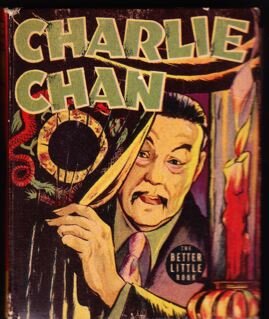
Big Little Book, 1939.
Later episodes featured such enticing titles as Charlie Chan at the Wax Museum. Charlie Chan in Panama (investigating the canal, no doubt), and Charlie Chan in the Secret Service. Toler continued in the role until his death in 1947. and was then replaced by TV actor Roland Winters, who was probably the most dismal Chan of all in the final six chapters be made between 1947 and 1949.
Following that, there were a few TV appearances by the sleuth (who also had a radio program and a newspaper strip at one time), but thankfully, the last word seems to have come from Biggers himself. In 1976, Bantam Books began reissuing the six Olan novels. For those who were brought up on the Saturday morning reruns of the detective's films, these books· will provide quite a surprise. They're a bit dated, but they're also charmingly good mysteries.
As the Nation commented in an obituary editorial, "Biggers' detective fiction was also good literature and Chan symbolized the sagacity, kindliness and charm of the Chinese people: his epigrams redistilled the wisdom of the ages in a new and captivating fashion." Charlie couldn't have said it better.
Dracula
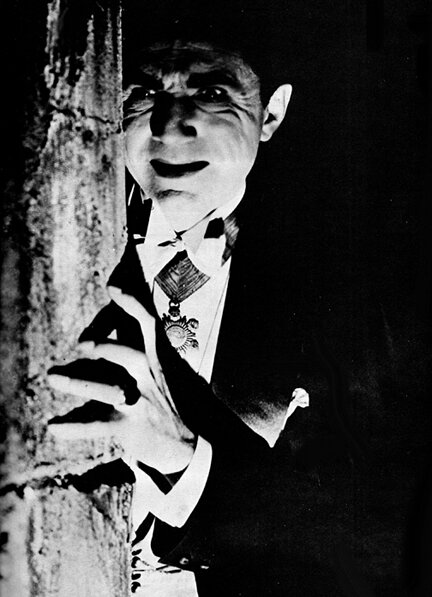 Bela Lugosi as Count Dracula
Bela Lugosi as Count Dracula
Do Not Be Afraid...
How One Dead Actor Successfully Sued Hollywood
By TOM SOTER
from COLUMBIA DAILY SPECTATOR, October 31, 1977
What do Bela Lugosi, U.S. District Court 374, Bram Stoker, Universal Pictures and Halloween all have in common?
The answer: Dracula or more particularly, the Dracula Halloween costumes that were an important element in determining a person's "right of publicity."
Yes, you read that right. It's not widely known, but in addition to privacy rights, people can also have publicity rights. So, what's the difference and how does Dracula fit in?
To answer the first question first, the court has said that a person has the "right to be protected against the use of his face for commercial purposes." But it has also ruled that such a right ends with death, since privacy isa state of mind-a desire to be free from "excessive publcity" and cannot be '''invaded'' when the mind is no longer functioning. The Young family, therefore, could not collect for this true statement made on a satirical TV show: "Mrs. Katherine Young of Syracuse, N.Y., who died at 99 leaving five sons, five daughters, 67 grandchildren, 72 great-grandchildren, and 73 great-great grandchildren gets our First Annual Booby Prize in the Birth Control Sweepstakes." The, deceased, Mrs. Young's privacy could hardly be disturbed and consequently her children had no case.
'
The right to privacy is also compromised when a person. becomes a public figure. The generally agreed upon princ'iple is that once you are a celebrity you have surrendered a great deal of your privacy. You have entered the public eye and should expect. public scrutiny-whether you're an author, a sports figure or a politician. The public has a legitimate interest in' what you 1:lo and news sources should not be punished for responsibly contributing to the market-place of ideas
Thr rightto invade a person's privacy is not unlimited, however. The Court has stated that "A celebrity has a legitimate property interest in his public personality." The main question in all public figure decisions, then, is: "was the story exploitation or news?"
With this in mind Universal Pictures, which was responsible for .BelaLugosi's two appearances as Bram Stoker's Count Dracula in Dracula (1931) and Abbott and Costello Meet Frankenstein (1948), felt it wasn't treading on anyone's toes when they leased the late actor's face to a Halloween mask company in the early 1960's. The psuedo-Count's son, Bela George Lugosi, felt otherwise, however. In a 1972 case, he insisted that the movie studio had no business using his father's likeness without reimbursing the Lugosi family.
Universal's lawyers quickly cited the privacy rulings and argued that even if they didn't apply, the fact that Lugosi had signed a contract with Universal meant that he had given up certain privacy rights. Being dead' and under contract locked up ,.the matter, the studios asserted, saying the Lugosis couldn't collect.
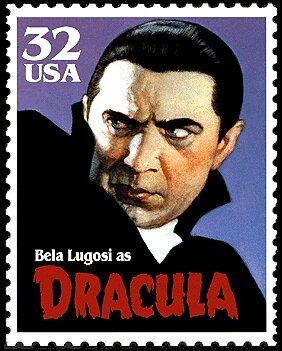 Lugosi as stamp: exploited - again!
Lugosi as stamp: exploited - again!
The court disagreed. Dealing with the last point first, Judge Bernard S. Jefferson commented that Lugosi's contract did indeed allow Universal to' "use and exploit any and all of the artist's acts, exposes, plays and appearances in connection with the, advertising and exploitation" of the films. But, he added, "The products such as kites and shirts which were licensed to carry the appearance of. the Count Dracula character were not sold at all in connection with any advertising of the Dracula photoplay to appear on television or any theatre screen," and therefore, the contract did not apply.
'
Dealing next with the more important question of privacy, Judge Jefferson reason that since public figures have a lesser right to privacy than others do, they also have greater publicity value. Consequently, even though Lugosi had no privacy standing any longer, his face was still a marketable property.
The importance of this point becomes clear when' one realizes that property rights, unlike privacy rights, have a pesuniary value and are therefore transferable to heirs. The argument goes that since privacy is a mental condition, and publicity a monetary one,' heirs should be able to collect whenexploitation Occurs. Although Lugosi was dead, his publicity value was still intact as a property right and could be transferred. Universal therefore, owed the Lugosi family an apology, and quite a' bit of money as well, since it had exploited the actor without permission. In so doing, however, it set an impOrtant legal precedent, and also proved that you can't keep a good vampire down-even when he's really dead.
He Haunts the Screen
Although many actors have essayed the role of Bram Stoker's Count Dracula, it is Bela Lugosi with whom the role is popularly associated. The curious thing about this is that Lugosi, unlike a later Dracula, Christopher Lee, appeared in only two films as the Transylvanian count.
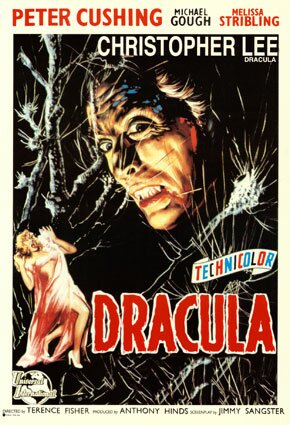 Hammer Films revived Dracula.
Hammer Films revived Dracula.
The first of course, was Dracula (1931), directed by Tod Browning (who was later to do Freaks, a movie about mutants that. was banned when released in 1933) for Universal Pictures, and co-starring Dwight Frye and Edward Van Sloan. It was', based on a successful Broadway play in which Lugosi had starred and was photographed by the talented Karl Freund, who had worked on F.W. Murnau's Last Laugh (1924) and Fritz Lang's Metropolis (}927) before coming to Hollywood where he photographed The Mummy (1932); Camille (1936),and Key Largo (1948), among others.
Lugosi's subsequent vampire films were hardly as noteworthy. Following the success of Dracula the Hungarian born actor teamed up with Browning again for 1935's Mark of the Vampire (1935), as an anonymous blood-sucker with a daughter (Carol Borland), pitted against Lionel Barrymore. In Devil Bat (1940), Lugosi was a mad scientist attacked by his own vampire bats; and in The Return of the Vampire (1943) he played Armand Tesla, "a notorious Rumanian vampire" who runs amok in World War II London.
The actor made his final appearnace as' Count Dracula in the horror movie sendup Abbott and Costello' Meet Frankenstein (1948), which also co-starred Lon Chaney Jr. as the Wolf Man and Glenn Strange as Frankenstein's monster. Needless to say, it was a sorry end for, an illustrious creation, but the worst wa/; to come, as Lugosi'sfinal vampire film was the insipid Mother Riley Meets the Vampire (1952). He died in 1956 at age 74 in a state institution for the drugaddicted and the poor.
Other actors who appeared as Dracula over the years are Max Schreck, Lon Chaney (both Sr. and Jr.), John Carradine, Francis Lederer and, most notably, Christopher Lee, who has built his career on his many appearances as the Count.
Edgar Rice Burroughs

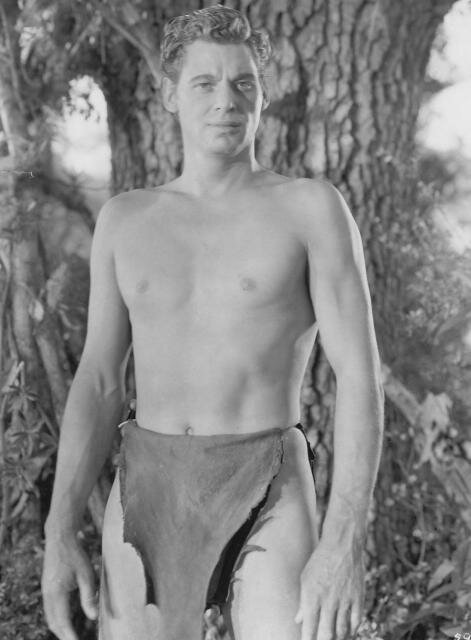 Johnny Weismuller as Tarzan
Johnny Weismuller as Tarzan
MASTER OF THE ABSURD
BY TOM SOTER
from COLUMBIA SPECTATOR, October 6, 1977
The Bandit of Hell's Bend (Ace Books, 280 pp., $1.75);The Girl from Hollywood (Ace Books, 244 pp., $1.75), both by Edgar Rice Burroughs.
"Me Tarzan, You Jane," was a rallying cry that Edgar Rice Burroughs never approved of. Although it netted him millions of dollars as the creator of a Jungle Lord who appeared in comics, movies, radio programs and books, the Chicago-born ex-pencil-sharpener salesman always felt that his creation was misrepresented by Johnny Weismuller and friends.
He was right, too. The fifty-year-old fascination that' the world has had with Tarzan is based not so much on the Apeman's primitive, back-to-nature quality (although that has something to do with it) as on the unusual combination of savagery and civilization that is Tarzan. As Lord Greystoke, the apeman is erudite, well-mannered and well-read, the master of many languages, including apetalk. As Tarzan, however, he is a wild and deadly adversary, just as much at home fighting lions as other men would be fighting their wives.
Burroughs wisely combines this unusual character with fast"moving, unbelievably fun plots that relied a great deal on coincidence, romance and nasty baddies. The reader had little time to think about flaws because everything moved so effortlessly. E.R.B. was rightly called the Master of Adventure, but he could also have been called the Master of the Absurd.
In recent years, the late author (he died in 1950) has gained a new set of fans who eagerly devour anything remotely associated with the Burroughs canon. Besides the Tarzan books (there ·are 25), E.R.B. also wrote 11 Martian adventUres, seven "inner world" novels, five Venus adventures, and many. other sciencefiction, mystery, and Western stories. Ace Books, in its continuing crusade to make money, has unearthed a pair' of those works which haven't seen the light of reprinting in over fifty years.
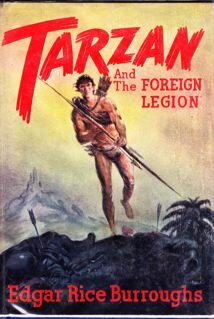 First edition of 1948 Tarzan novel.
First edition of 1948 Tarzan novel.
The first, The Bandit of Hell's Bend, is fairly standard Burroughs. Which means that there will be quite a bit of fast-paced action, a solidly dependable hero, a heroine who doesn't know her own heart until the last few pages, and an exciting climax where justice is achieved and everything is cleverly tied up.
E.R.B. books like this one are usually pretty heavy-handed, but manage to keep from being tiresome by the author's humor and inventiveness. Sentences like "Two men with muffled faces stepped before the leaders .... and covered the passengers with wicked looking six-guns" or "You unspeakable-THING! It I would be an insult to a cur to call you that" are certainly not worthy of Henry James, but might give Wilkie Collins a run for his coincidences.
Probably the best way to sum up Bandit, however, is to say that it would make a great R.K.O. "B" picture starring Randolph Scott and Rochelle Hudson: there are shootcem-ups, dudes, and cliches galore ("Oh, Bull, I have been such a fool! I have always loved you"), but Burroughs keeps up the pace nicely and most of the flaws can' consequently be overlooked. Bandit has the ferver of the best
Burroughs novels. And although it is marred by some poor dialogue, it is certainly not as campily dated as The Girl froml Hollywood, the second of Ace's discoveries, which is fun in a different way. This book is a little different, but not much, from the usual E.R.B. fare. Both the hero, a Tarzan-type named Custer Pennington, and the heroine, the "girr' of the title named Shannon Burke, are partially flawed: He drinks and she takes drugs. However, in both cases they overcome their weaknesses through the power of mutual love and clean living (what would novel-writers do without , love?).
The story is a contemporary one, set in 1922, and the picture of the grimy Hollywood life of junkies and sluts is interesting for its naivete and melodrama. It is also interesting because it is so unlike what Burroughs usually attempted: escapist fantasies in the jungles of Africa or under the moons of Mars. However, this is escapist stuff, too, only disguised. No one could take the fantastic coincidences, wild melodrama, eleventh hour escapes or corny dialogue (' 'I'd as soon kiss a Gila monster as you!") seriously. The curious thing is that it's an attempt by Burroughs to romanticize sordidness and show that even in the real world the good can win out.
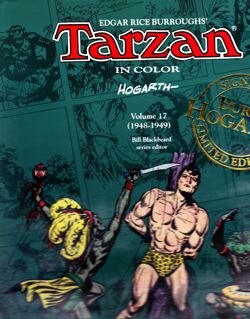 Collection of Tarzan comic strips.
Collection of Tarzan comic strips.
The circumstances of E.R.B.'s own career belie this, however (failure in everything-including marriage-until he became a writer), and in the end, the book is fun mainly for its already cited flaws and also for a quality that Dickens had as well: that power of pure storytelling, where the characters and the plot contrivances are fantastic enough to make one forget yesterday's problems. The Bandit of Hell's Bend and The Girl from Hollywood are museum-piece books, contrived and sentimental with virtue winning in the end, and everyone living happily ever after. They're phony but they're also fun, and certainly offer proof that Edgar Rice Burroughs was more inventive than "Me Tarzan, you Jane" would suggest. They also offer reassuring proof that some things-like the appeal of ERB. and old-fashioned adventure never really change.

A LOOK BACK
By Tom Soter
As soon as I began writing for The Columbia Spectator, I brought my interests in Sherlock Holmes, Tarzan, and James Bond to the forefront. Writing about Burroughs was a natural; I had read almost his entire oeuvre by the time I was 14, published an amateur magazine devoted to his life and works, and even hosted a home-taped show called The Edgar Rice Burroughs Discussion Hour (see essay, https://tomsoter.com/?q=node/296). My interest in Burroughs continues to this day, although not at the fever pitch of my youth. I also reused some of this material (a good lead is hard to come by) for later articles on Tarzan for Diversion and Video (see https://tomsoter.com/?q=node/404).
Erle Stanley Gardner
Perry Mason's Creator
LIFE EXCELLING ART
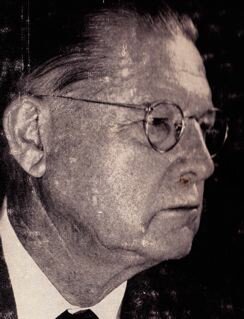 Erle Stanley Gardner
Erle Stanley Gardner
By TOM SOTER
from THE COLUMBIA DAILY SPECTATOR
March 24, 1978
"I still have vivid recollections," said mystery writer Erie Stanley Gardner some years ago, "of putting in day after day trying a case in front of a jury – which is one of the most exhausting activities I know about – dashing up to the law library after court had adjourned to spend three or four hours looking up law points with which I could trap my adversary the next day, then going home, grabbing a glass of milk with an egg in it, dashing upstairs to my study, ripping the cover off my typewriter, noticing it was 11:30 p.m., and settling down with grim determination to get a plot for a story. Along about three in the morning I would have completed my daily slint of a 4,000-word minimum and would crawl into bed."
Erie Stanley Gardner, of course, is the creator of world-famous lawyer Perry Mason, and this anecdote helps explain how Gardner, by the time of his death eight years ago this month, had become the best-selling, arid most prolific American writer of the 20th century, with paperbacks selling at the rate of 20,000 a day and all-time sales, as of 1977, nearing 304,000,000 copies in 23 languages.
Like Walter Scott and Daniel Defoe before him, however, Gardner was a man superior to his fictions: cleverly plotted, easily read formula pieces that are heavy on story and not much else. To say that he led a varied life would be as much an understatement as saying that he was concerned with justice and the underdog. Erie Stanley Garnder was a man fascinated by people-in all classes of society-and he spent his life searching them out, helping them when he could and, most importantIy, learning from them. His boyhood was spent in the Klondike, where his father was a miner, and his education was, by his own account, "unorthodox, gravitating between amateur, four-round exhibition fights at Oroville, Calif., to studying law in the office of the deputy district attorney." 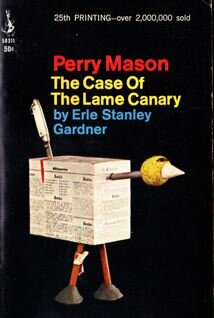
Although he was admitted to the California Bar in 1910 and practiced law in Oxnard, Calif. for the next six years, the young man could not settle down to anything conventional. He defended penniless Chinese and Mexican workers when no one else would help them (and many were acquitted); gave up law for a couple of years to become a tire salesman; joined a law firm, and then, in 1921, with a story called "The Police and the House," began writing for pulp magazines. This was the turning point, and by 1928 he averaged better than a million words a year while still maintaining. his law practice.
In the 1930s, Gardner began writing full time. He also began traveling. "I have always been fascinated by the Chinese people," reported the author in 1942; "and because I had numerous Chinese clients, started studying the language and psychology." This led to a trip to China in 1931, followed by journeys to Horiolulu, the South Seas, Mexico and various parts of the United States. Gardner was a man of seemingly limitless energy and curiosity and his travels were as frequent as his books.
Such a life was made possible with the advent of Perry Mason. The lawyer-detective, who ultimately starred in 82 novels, a dozen short stories, six movies, 302 television episodes and countless radio shows, first appeared in The Case of the Velvet Claws in 1933. It was apparently turned down by a number of publishers before being accepted by Thayer Hobson, president of William Morrow & Co., who suggested'that Gardner specialize in a series character rather than create new heroes and new locales for each adventure.
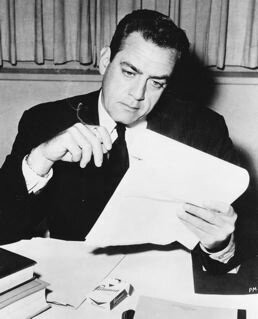
Raymond Burr as Perry Mason
The format suited the author and, so, when he died on March 11, 1970, Gardner was literally earning millions by producing, with the help of a battery of tape-recorders and transcribers-four or five novels a year. "Thirty years ago," he reminisced in 1968, "I could dictate a book in a week or ten days, revise and polish it and get it into the hands of a publisher within two or three weeks of the time I started."
Among the many books and countless series characters and also countless pen names: the Patent Leather Kid, Hard Rock Hogan, Ed Jenkins, The Phantom Crook, Bertha Cool and Donald Lam, D.A. Doug Selby, and, of course, Perry Mason. Among the pen names were A. A. Fair, Charle'S M. Green, Kyle Corning, Grant Halliday, Carleton Kendrake and Arthur Mann Sellers. In total, he wrote close to 150 books.
Gardner once explained his popularity:"Ordinary readers see in me somebody they can identify with. I'm for the underdog. When you realize that since prohibition, since rationing in World War II, since the income tax, the average man goes around, with a vague sense of uneasiness. He wants to be reassured that there is an advocate who will defend him and get him off? Perry Mason is that kind of lawyer, a combination of three or four I've known, maybe a little of me. "
There was ,more than just a little bit of Gardner in Mason. The author's concern for fair play, which never left him, was even stronger than his creation's. He was an ardent sportsman, for instance, yet he refused to use a gun. He felt that wildlife didn't have a chance against high-powered weapons – and so he hunted with a bow and arrows. More significantly, in 1948, he helped found "The Court of Last Resort," intended to help poor men who had been wrongfully convicted of murder and who had exhausted all their legal rights. The court was successfully maintained – with many clients being cleared – for fifteen years, and in that time, "just about every hopeless case in the United States was dumped on me," Garciner once commented. In his later years, the author's interest in the downtrodden continued, as did his writing. When he died pe left two unpublished Perry Mason novels sitting in his drawer.
More significantly, in 1948, he helped found "The Court of Last Resort," intended to help poor men who had been wrongfully convicted of murder and who had exhausted all their legal rights. The court was successfully maintained – with many clients being cleared – for fifteen years, and in that time, "just about every hopeless case in the United States was dumped on me," Garciner once commented. In his later years, the author's interest in the downtrodden continued, as did his writing. When he died pe left two unpublished Perry Mason novels sitting in his drawer.
Seven months before his death, while on vacation, I sent Gardner birthday greetings. Busy as he was, he didn't have to reply; but being Erie Stanley Gardner, he did. "I had a bang-up birthday,'" he wrote me, "and your letter certainly added to my enjoyment. Thanks a lot for remembering me, and I hope you had a wonderful vacation."
Remembering others was something Gardner did so well. It is fitting, then, that we now remember not only the books, but more importantly, the man who wrote them. "Most readers are beset with a lot of problems they can't solve," Gardner once said. "When they try to relax, their minds keep gnawing over these problems and there is no solution. They pick up a mystery story, become completely absorbed in the problem, see it worked out to a final and just conclusion, turn out the light and go to sleep. If I have given millions that sort of relaxation, it is reward enough."
Silver Streak
[[wysiwyg_imageupload:654:]]
TRAIN DOMINATES IN "SILVER STREAK"
By TOM SOTER
Why is suave Patrick McGoohan trying to eliminate plant-book editor Gene Wilder? Can it really be because of the Rembrandt letters which will prove McGoohan a lousy appraiser? On reflection, it does seem like a rather poor motive for murder. However, Silver Streakis not a film that frequently offers time for reflection; it is rather an entertaining throwaway that is somewhat reminiscent of the James Bond movies in their prime. Like the early 007 epics, Arthur Hiller's new film is relatively fast-paced and tongue-in-cheek. Unlike them, however, the emphasis is more on slapstick and one-liners than suspense and gadgetry.
The story involves a rather quiet man who takes a train ride cross country because he wants "to be bored." Of course, he never is since almost from the moment he begins his· trip one unlikely thing after another happens. He is thrown off the train (not once but twice), chased by the police, pursued by the F.B.I., caught in a gun battle (not once but twice), and trapped on a speeding, driverless train which comes to a smashing (pun intended) end.
Obviously, screenwriter Colin Higgins' technique is of the everything-but-thekitchen-sink school. When the pace begins to sag, as it does quite noticeably a number of times (in Wilder's second expulsion from the train, or in his encounter with Louisiana sheriff Clifton James, for instance), Higgins introduces a new plot twist or character to help re-invigorate the story and get things rolling again. One example of this is the introduction of Richard Pryor, who appears at the right moment with the right casual approach, in the back of a police car Wilder has just stolen. Pryor congratulates the driver on the theft, tells him that he was a thief too and asks, "What'd they get you for?" Wilder replies "Murder;" and Pryor quickly says, “You can let me off at the next stop." Here it is not really the joke itself that gets the laughs, but the delivery,
Similarly, Pryor's standing up in the middle of a violent gun battle and angrIly asking, like a peeved consumer, "Who's in charge here?" is not very funny in the telling, but comes across quite effectively on the-screen. It is absurd, incongruous, and therefore, amusing.
Although Pryor gets the majority of the good lines, Wilder, at his frantic best, is a nice foil. Villain McGoohan is also quite good. He is polished and professional and, though painted a bit too blackly at the end, the most sane figure in a chaotic and caricatured world. Curiously, he is not done in by the well-intentioned if rather clownish heroes. of the film, but by the train: the symbol of the mechanized, established society of which he is so much a part.
This image of the train is constantly present. A love scene between Wilder and Jill Clayburgh is shot in a window's reflection so that we are continually aware of the speeding countryside outside and thus of the train's presence. And the conclusion, a slow-motion portrait of destruction as the Silver Streak line crashes into Chicago's Union Station, is as beautiful as it is improbable. That, combined with Clayburgh's last comment about the train, “It looks like it's smiling” (as indeed it does) is important. The train has be.en the catalyst –affecting but unaffected by all that has gone on about it. It has remained aloof and unchanged and ultimately has had the last laugh on all of the characters by giving each of them more than they bargained
for. As has been mentioned, there are a number of slow points, and a few jokes do fall flat. In addition, many of the improbabilities (Pryor's sticking with Wilder for so long, the convenient airplane used to catch up with the train) are never really explained.
But perhaps Goldfingerdirector Guy Hamilton said it best when talking about the Bond . films. He said, "we tell the audience, “Come with us for a glorious ride. But leave your brains under the seat and don't ask too many questions. Because if we have to stop and explain things we will lose momentum.” Silver Streakisn't exactly a glorious ride, but it certainly does a fair job at keeping up the momentum and the laughs. In a time when so much garbage passes for comedy, that's no small accomplishment.
Columbia Daily Spectator, February 2, 1977
Star Trek
 TREKKIES MUST, BUT NO ONE ELSE CARES TO
TREKKIES MUST, BUT NO ONE ELSE CARES TO
By TOM SOTER
from THE COLUMBIA DAILY SPECTATOR
March 9, 1978
The City on the Edge of Forever, by Harlan Ellison, adapted by Mandala Productions (Bantam, 16Opp., $1.95).
Where No Man has Gone Before, by Samuel A. Peeples, adapted by Mandala groductions (Bantam, 160pp., $1.95).
"On the day the news of (James) Blish's death reached America," reports Damon 'Knight in his recent book on science fiction, The Futurians, a fan at the Star Trek convention in Philadelphia picked up one of Blish's Star Trek books from a .dealer'stable and asked 'Is this the guy 'that died?' When the dealer said yes,the fan asked, 'Is he going to be doing any wore of these?' "
This sadly funny anecdote is revealing about the sort of fans and type of marketing something like Star Trek has a ;tendency to create. Not really good drama, and often too pseudo-sciencey to be good science fiction, the decade old TV series is a phenomenon of sorts. It premiered on NBC television over ten years ago; had a relatively short Ijfe (1966-69); and then, then, like the Phoenix, became a huge success across the country, rising from the ashes of cancellation in syndicated reruns. Star Trek .conventions were subsequently held throughout the country wherefans, affectionately or d.isdainfully referred to as "Trekkies" could exchange. "memories,i trivia and hopes for the show's resurrection.
Needless to say, Gene Roddenberry, Star Trek's creator and executive producer, was not slow to realize the marketing potential that lay here: he and his cohorts auctioned off scripts, props and other "priceless" objects of memorabilia (the irony being that when talk of revival came, Roddenberry had nothing to revive but his rrwmories).
James Blish's 12 Star Trek books are one result of this popularity, and it's sad comment on the reading public that, of all Blish's thought-provoking earlier works,. these things are the only books that brought him any sort of general recognition or real profit. They are bastardizations-transcribed scripts with the necessary descriptions added-and easy money for the author. The fans didn't seem to care, however, and Knight's story is appropriate since Blish's death really alters nothing. Anyone could write these hack pieces (as evidenced by Alan Foster's Ballantine Books adaptations of the Star Trek cartoon series), regardless of talent, and the unfortunate thing is that the new "Blish" will be as successful as the old one. There are 10 million copies in print of theStar Trek books.
This assembly-line process has been taken one step further with Bantam Books' latest gimmick: Star Trek "Fotonovels." Here, the adaptor or author has been turned into a company-Mandala Productions gets the author's byline-and the books themselves employ full.color frame enlargements and word balloons to depict "actual adventures" from the show. Added' features include an illustrated cast listing, a glossary, notes on the episodes and trivia quizzes.
The photos are, on the whole, excellent, and though some of the transition captions are a bit hokey ("McCoy stares unbelievingly at Edith's' twisted, broken body. But Kirk cannot bear to look.") the book amusingly captures the spirit of the show, which was something of a comic strip anyway.
The volumes available now are The City on the Edge of Forever and Where No Man Has Gone Before. The first was written by noted science fiction author Harlan Ellison (who was reportedly quite upset by the changeslllade in his script) and won a number of fandom awards. Other "fotonovels" scheduled for publication include The Trouble with Tribbles, A Taste of Armageddon, Metamorphosis, and All Our Yesterdays. A must for Trekkies, but hardly for anyone else.

A LOOK BACK
Although you wouldn't know it from this piece, I actually like Star Trek Looking back, it is hard for me to remember why I took such a sneering tone, unless I was ticked off at the exploitation that went on around it. Or perhaps I just wanted to be different. For a better view of the series, see my later article in Diversion at https://tomsoter.com/?q=node/772.
TV Trivia
Television Treacle, Trivia, and Gossip
Astutely Analyzed
 Fantastic Television, by Gary Geranl with Paul H. Schulman <Harmony Books, 192 pp., Illus., $5.95).
Fantastic Television, by Gary Geranl with Paul H. Schulman <Harmony Books, 192 pp., Illus., $5.95).
Have you ever wondered how many episodes of Superman were made? Or how many partners John Steed had on The Avengers? Did you know that Cliff Robertson got his start In a TV series called Rod Brown of the Rocket Rangers? Or that Roald Dahl once hosted a show called Way Out? Have you ever wondered why pudgy Adam West was chosen to play Batman?
If not, then stop reading right here. If you have, however, then Gary Gerani and Paul Schulman's new book, Fantastic Television is just for you. In it, the authors index and describe every science fiction and fantasy TV series ever made, no matter how remotely connected to the genre, with shows ranging from standards like Star Trek and Outer Limits, to oddball things like Fireball X-L5 and Men Into Space.
The book is particularly fun for me as it should be for most of my generation, who grew up with the majority of the programs mentioned here. Where else, for example, could you be reminded that the stars of Supercar (a group of very energetic marionettes) were Mike Mercury, a stoical puppet, Dr. Beeker, "a brilliant, but wacky scientist, Mike's ward Jimmy, and Mitch, their pet monkey?"
Where else, too, could you find descriptions (like this one of a Batman incident) that properly catches the spirit of a show?: "the Caped Crusader casually strolls through a swinging discotheque, tells the maitre d', 'I shouldn't want to attract attention,' then stolidly orders a glass of orange juice at the bar." And where else could you find astute analyses of programs as different as Superman· and The Prisoner with comments like these?:
"In The Prisoner, the hero has 'vindicated the right of the individual to be an individual,' implying that if enough people assert their individuality, society won’tbecome a dehumanized, conformist mass. When Number Six asks who Number One is, the startling answer that he is Number One. He quit his intelligence post, therefore, for two reasons: first, to protest the repression fostered by the intelligence community as represented by ... the omnipresent bugs; and. second, to imprison himself, thereby demonstrating that each man'is his own warden, conforming to society's design only by his own com mands ... "
The answer is nowhere else, which makes Fantastic Television great fun to read: a work that effectively plays on nostalgia by refreshing many all but forgotten memories. Authors Gerani and Schulman are obviously fans themselves and have the right combination 'of detachment and involvement to make the behlnd-the-scenes descriptions and infront-of-the-screen analyses work.
The book is broken up into a number of parts. The first, "The Fine Tuning Section," features major s.f. programs which "were distinctive and memorable. Some were intelligent. some had incredible special effects, some were haunting or funny, and, of course, most were popular.” Here there are overall synopses and analyses of the series and their production and then chronological listings of every episode with production credits, cast lists, and TV Guide-like descriptions.
The briefer sections, “American Telefantasy” and “British Telefantasy” cover more tentative s.f. series and less Important offshoots (Bewitched, A for Andromeda) while "Kid Stuff" covers cartoon (Eighth Man, Astro Boy) and marionette shows (Planet Patrol, Supercar), and "Madefor-TV -Movies" covers just that.
All in all, Fantastic Television is the most comprehensive work of its kind that I've ever seen and is a tribute of sorts to the black and white images that were so much a part of my generation's youth. It's a monument to trivia, and as such is great nostalgia and great fun. Quick now, who did the Robot's voice on Lost in Space?
COLUMBIA DAILY SPECTATOR September 14, 1977
The Slipper and the Rose
COLUMBIA. DAILY SPECTATOR November 15, 1976
Cinderella' s Light Romance, Satire
By TOM SOTER 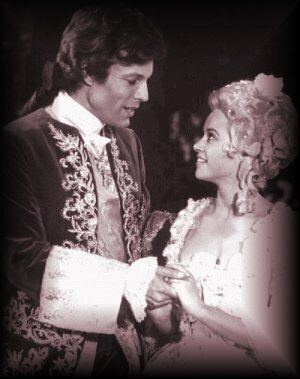
Chamberlain and Craven: someday my prince...
"It was the same with Snow White," says an exasperated Godmother, "you young girls never do as you're told " Doing as one is told is only one of the many lessons that scenarists Robert Sherman, Richard Sherman, and co-scenarist director Bryan Forbes have gotten out of that tired old children's tale call1ed "Cinderella."
In their new· musical version, The Slipper and the Rose: The'Story of Cinderella, Forbes, with the help of a delightful cast and some very witty interpretations, has managed to rein; vigorate the old story, giving it some new twists while retaining much of the old romance.
These new twists include the aforementioned Fariy Godmother (Anette Crosbie) who is a good indication of the overall semi-romantic, semi-siUirical tone of the film. They also include a number of interestingly presented and familiar themes, foremost among them being the conflict between live and duty. The love, in this case, is the Prince's (Richard Chamberlain) for Cinderella (Gemma Craven), while the duty is the one he owes his country, a small kingdom named Euphrania which needs a marriage. of convenience with a stronger ally's princess.
On this idea, the movie gently and engagingly builds its points, poking fun at the many foolishnesses of· government with its amusing cast of characters. Among them, there's a silly King (Michael Hordern) with some clever lines, a senile Dowager Queen (Edith Evans) who makes very appropriate inappropriate comments, a pompously befuddled Lord Chamberlain (Kenneth More), and of course, the Fairy Godmother, whose interpretation of a rather practical~rnlnaed woman doing her rather unusual duty is perhaps the most enjoyable thing of all ("I'm a-Fairy Godmother," she says by way of awkward introduction, "don't ask me how I got into it ... ")
But the movie is not simply a string of one-liners. Forbes and company have managed to balance their gentle parody with an even gentler-and. at times quite touching-romance. The first meeting of the two lovers at the balt; for example, is quite enchanting, even though it has all the makings of a cliche. What Forbes has done successfully here (and unsuccessfully elsewhere) is to balance the romantie with the satiric. By having Cinderella announced as "The Princess Incognita," he deflates the .importance of the scene just enough to put the viewer off his guard (just as the Prince and his guests are off their guards), while at the same time managing to heighten the girl's actual appearance by a very subjective treatment. We first see her, as the Prince does, in long shot. As he moves toward her, the camera dollies in and there's silence, save for a soft piece of music. They finally come together and the camera angle has become so tight that all we can see are the Prince and "Princess" about to dance. To them, figuratively, and to us, literally, they are in a "world of their own" -a world of romantic love where no one else exists.
lt is a tribute to Forbes' understanding of his medium that; he is able to get this feeling across-a feeling so very important if one is to fully appreciate the realistic conflict that is to come.later. Or, as the Chamberlain explains to Cinderella in a moving scene, "You see love and happiness staring you in. the fac,e. But I see only war and destruction unless a sacrifice is made." It is made arid the film almost becomes a tragedy-'until the Fairy Godmother once again takes a hand ("I suppose I shall have to rise to the occasion and do something spectacular," she sighs. The happy ending doesn't serve to completely erase the very real problems the film presents. How does one resolve the conflict between love and duty?
As many of the well-integrated songs point out, the people have always accepted duty and convention-but that acceptance has often given them corrupt, insane, or (as in this film) silly rulers. There are a few conceptual flaws here and there. For instance, although most of the major characters arp. very well done, the stepmother (Margaret Lockwood) and stepsisters (Rosalind Ayres and Sherrie Hewson) are a bit too stereotypical and thus rather uninteresting in comparison with the rest of the cast. There is also the problem of some occasional romantic and satirical excesses which tend to unbalance the film at times and cause it to verge towards the silly.
And finally, the story has some initial trouble setting the proper tone, and one's interest doesn't really pick up until after the Dowager Queen is introduced. However, these are minor complaints, and· once the movie gets going they are forgotten. In short, The Slipper and the Rose is a more often than not very witty bit of entertainment and a show I would recommend for grown-ups of all ages.  A LOOK BACK By TOM SOTER This was my first published piece, in the Columbia Daily Spectator. Hardly an auspicious debut or an important movie (though apparently it has a following and web site of its own). I was in my Vincent Canby-mode; and for those who don't recognize Canby's name, he was the wishy washy film critic of the New York Times. I later developed a great dislike for him.
A LOOK BACK By TOM SOTER This was my first published piece, in the Columbia Daily Spectator. Hardly an auspicious debut or an important movie (though apparently it has a following and web site of its own). I was in my Vincent Canby-mode; and for those who don't recognize Canby's name, he was the wishy washy film critic of the New York Times. I later developed a great dislike for him.
Thomas Congdon
[[wysiwyg_imageupload:311:]]
BEES!
On a well-kept street in the west 80's there is an imposing,. four-story red-brick Brownstone built in 1877. Its owner, Thomas Congdon, is equally imposing, but in a different way. Not only is he a very successful editor-publisher at E.P. Dutton-the man' responsible for "discovering" aws-author Peter Benchley but he is also the owner of his own bee hive.
"Everyone enjoys having one little pleasure, one eccentricity all his own," Congdon remarks matter-of-factly, "and the bees are mine." He has tended a thousand bees in New York for a number of years, and before that raised them in Connecticut. where he still has thousands more.
In addition, he has his own publishing imprint-appropriately trademarked with a beehive -– under which he selects, develops and publishes "books that 1 am in love with -that 1 really feel 1 was born to be the publisher of."
He is a medium-sized man. with gray sideburns and sandy brown hair. He speaks softly -almost suavely-and seems slightly embarrassed to be talking about himself. "Editors don't like attention," he explains. "The author is the one who should get the at-
tention." '
Nonetheless, Thomas Congdon deserves notice. The imprint arrangement-which is bestowed on very few editors-came about partly because of his Jaws success, but also because of the energy and independence which have been a part of his-whole life.
As a youth he was fascinated with Japan, which he first encounte~ed after leaving the Navy. "I loved Japan and was dying to go back there," he remarks. He won a scholarship at a Tokyo University, but then had second thoughts, feeling that a life of leisurely study in the Orient might be a waste.
''I'm not a scholar," he says, "and going to Japan would have been an idle:' His alternative was the Columbia Graduate School of Journalism. His interest in Japan continued, however. A flowered, oriental rug decorates his living room floor, Japanese prints hang on one wall. and delicate China lamps perch on the tables.
Graduate school gave way to writing, and then to an editor's position at the Saturday Evening Post which Congdon held for 12 years before moving on to Harper & Row, Doubleday, and finally Dutton. In the process, he dealt with such luminaries as Tennessee Williams, Robert Kennedy ("he would have made a great President"), Richard Nixon ("a quivering mass of insecurities"), and a man named Peter Benchley.
FUNDING JAWS
"I was an editor at Douhleday,' publishing rather specialized kinds of books," he remembers. "public affairs, political science-that sort of thing-when I met this guy who had an idea for a novel." That "guy" was Benchley, and Congdon took the then unusual step of putting up $1,000 for the young author to write a IOO-page sample. "Benchley had to have money because he was broke," explains Congdon. "He was doing magazine pieces one after the other and couldn't afford to stop doing that to write a book."
Since Benchley had never written fiction before, Congdon was taking a risk,something which he downplays. "I spotted a good idea," he asserts, "and gave Benchley the capital to develop it." The success of Jaws gave its editor a lot of. visibility and was partially responsible for Congdon Books, a situation, which allowed Congdon to publish 12-14 volumes a year, "not the 20, 30 or 50 that most editors do. 'I'm very interested in story-telling," he says, "whether in fiction or nonfiction. "
As an example, Congdon cites Midnight Express, a non-fiction adventure, soon to be a movie, that he published last year. The story deals with an American youth sentenced to life imprisonment in a "horrible" Turkish prison who made a "fabulous escape" after five years captivity. "I like non-fiction that has a strong storyline," he says.
Congdon will also soon be publishing a biography of editor Max Perkins ("a great literary biography and a great middlebrow read") and a book about the possible beneficial effect of bee stings on arthritic joints called Bees Don't Get Anhritis. When the subject of bees comes up, the editor-publisher becomes more animated. "I've always been fascinated by bees," he remarks. explaining that he had been interested in bees ever since childhood when his mother refused to let him have a hive. "So as soon as J grew up and had a place of my own," he continues, "I got bees."
Living with the bees has taught Congdon a lot. "They're yery practical," he says. "In the winter, they cling together in a ball and do exercises like crazy:' That generates heat at the center where the Queen is, he explains, and allows her to live a "sort of Floridian 92 degrees all winter." And when the bees on
the outside of the ball find their temperature dropping, they . exchange places with ones at the center, going in to warm up. "They've got it all worked out," he adds.
DON'T GET STUNG
The bee-hive is located at the top of an ornate, Henry Jamesian staircase in a little room which also houses the television set. It is an "observation" hive-smaller than normal ones, flat and resembling a medicine chest.
"It's meant to produce interest, not honey," asserts Congdon. There are a number of different levels that can be viewed through the glass front, and on each level, brownish catacombs reminiscent of chicken mesh, can be seen.
According to their owner, the bees are usually very mild-mannered, and "only get testy if you do something wrong, like move fast or knock 'em around."
Congdon's family-a wife and two daughters-have accepted and seem to enjoy the bees as "part of my weirdness. The girls take their friends up and show the bees when the friend makes a first visit to our house."
He smiles and points to the rear. "We also have a big frog,' he says. "and goldfish." Behind the house, there is a little jungle: a pond for the fish, a garden for the frog, and seats for tile family to watch them. One gets the feeling that Tom Congdon enjoys observing and learning from life. "The bees have an interesting system of communication," he continues. "If the little scout bees 'have found a flower within a hundred yards, they'll dance a circle. But if Ws further than a hundred yards, they'll dance a figure eight. And a fast figure eight means it might be 120 or 150 yards away, where as a slow figure eight might be two or three miles.
How the bees relate direction is more complicated, but to Congdon, all the more fascinating. "When they do a circle. they'll suddenly do a diameter and then resume the circle. and then do a diameter again. "What"s happening. is that when you go to the front of the hive, find the sun and fly 30 degrees to the right of it:
HOMING INSTINCT
"So when I see my bees dancing a circle 45 degrees to the left of the top of the hive, I look where the sun is, and if it's 10:00 A.M., 45 degrees to the left means Central Park. He points to a plastic tube extending. from the hive through the wall, explaining that that is how they exit and enter. "Their homing abilities. are incredibly accurate," he says. "I f you' were to move the hive as little as three feet, they would return to the hive's old location .and circle that spot until they died." Congdon seems as unimpressed with this as he is unimpressed with himself. Although he is able to accurately evaluate his own abilities ("energy, promotiye flare. a good crealn'e sense"), he is more enthusiastic about others and about new ideas. He talks excited;ly about the Max Perkins biography, and when the idea of his bees flying to New Jersey is brought up, he remarks, in half-excited abstraction, "I guess they could-God, I wonder if they do do that? I'll have to see ... "
He doesn't gesture much and, for air he's done, seems modest, relaxed and almost self-deragatory. Having the bees, "is fun. It sort of freaks people out. "When I talk about them," muses Congdon, "and there are editors around, they invariably ask me if I'd like to write a bee book. But I probably won't ever write any books, I'm an editor." He pauses. ''I'm not willing to lead that lonely, hard life that a writer does in which you gamble two, three years on one book. "I love to be among people all the time and have lots going on and lots to do, whereas the author just has to keep focusing on that book:' He pauses. "I'm not willing to lead that lonely, hard life that a writer does in which you gamble two, three years on one book.
"I love to be among people all the time and have lots going on and lots to do, whereas the author just has to keep focusing on that book." He smiles in his casual, understated way. "It's a matter of temperament, I guess, or choice."
THE WESTSIDER, June 8, 1978
Anthony Trollope
An Appreciation of the Usual
By TOM SOTER
from COLUMBIA DAILY SPECTATOR
November 10, 1977; revised April 16, 2009
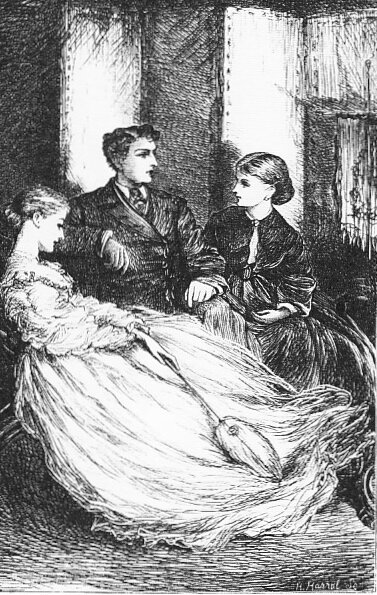
The Claverings by Anthony Trollope (Dover, 412 pp. with illus., $5).
Anthony Trollope is on a roll. The prolific Victorian writer (he wrote 47 novels, dozens of short stories, essays, and travel books) is as popular now as he ever was in his lifetime (1815-1882). Perhaps more so. The Pallisers have come to the television screen; Berkeley Books has reissued the six Palliser novels; Bobbs-Merrill has published The Way We Live Now in a well-annotated, definitive edition; and Dover has printed a beautiful facsimile first edition of The Claverings.
Trollope's new prominence is even more amazing because he was forgotten for a time. He hurt his reputation by decalring in his posthumously published autobiography: "There are those who think that the man who works with his imagination should allow himself to wait till inspiration moves him .... To me, it would not be more absurd if the shoemaker were to wait for inspiration, or the tallow-chandler for the divine moment of melting." This explanation of Trollope's systematic way of working was used by many Victorian critics to dismiss the author as a journeyman hack who mechanically and unfeelingly ground out trite stories.
Anyone reading any of the new paperback releases (or even looking further along in the Autobiography, where Trollope states that "the writer, when he sits, down to commence his novel, should do so, not because he has to tell a story, but because he has a story to tell") would see that this notion is as silly as it is false.
The Claverings, for example, published originally in the Cornhill Magazine between 1866-67, demonstrates why Trollope endures. The story deals with Harry Clavering, a vacillating, weak hero who can't decide between his first love, Julia Brabazon, who rejected him for a wealthy lover and a "practical" marriage, and his second one, Florence Burton, whom he is about to reject because his widowed first love wants him back.
The book's storyline and style may seem simple and straightforward, but there is a subtlety about the characters that is impressive. Henry James, who was adept at characterization himself, once remarked that Trollope's great gift was his "appreciatipn of the usual." Although they are an unlikely heroic couple, Harry and Julia both possess a believable humanity; they are not caricatures, but characters: flawed and sympathetic. Harry is weak because he wants to be popular with everyone; he cannot take the moral stands that would hurt others. Julia, however, is too strong; she makes all the hard, pragmatic decisions, but because she doesn't give in to sentiment and marries without love, has nothing to support her when she is widowed and ostracized by a society upset with her actions. In Julia's case, however, Trollope may condemn her scheming ways and says that "the punishment which comes upon her has been deserved," he also pities her. She is representative of the role that many women had to play in a world that denied them the opportunity to live independently. His condemnation is what his readers expected; nonetheless, the events of the story give it a hollow sound. "Love is not to be our master," Julia says to Harry at one point. "You can choose, but I have had no choice, no choice but to be married well, or to go out like a snuff of a candle, and, therefore, I am going to be married well."
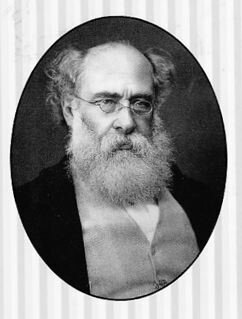 It is this understanding and sympathy for the strengths and weaknesses of people that makes Trollope's work so fascinating. As Ruth apRoberts points out in her book Trollope: Artist and Moralist, "What Trollope consistently does is treat women as human beings primarily. All the virtues he understands by the word 'manly' he will at times allow to women. This is a way of granting women firstclass citizenship in the human race; it may be a more humane course than taking sides for or against rights. It is at least not simplistic."
It is this understanding and sympathy for the strengths and weaknesses of people that makes Trollope's work so fascinating. As Ruth apRoberts points out in her book Trollope: Artist and Moralist, "What Trollope consistently does is treat women as human beings primarily. All the virtues he understands by the word 'manly' he will at times allow to women. This is a way of granting women firstclass citizenship in the human race; it may be a more humane course than taking sides for or against rights. It is at least not simplistic."
Trollope is never simplistic. His easy style masks the complexity of the subject matter, and its many characters are psychologically sound – neither black nor white, but gray – and the situations presented successfully mirror real life in that they are not all cleanly resolved. Trollope's comment that "I doubt now whether anyone reads The Claverings" might be true, but it is also a shame. It is a terrific book.
Dover has published a handsome new edition, with many illustrations and only slightly too small typeface.
 A LOOK BACK
A LOOK BACK
I discovered Trollope in my first semester in my first year at college when I took a course in Nineteenth Century English literature and read The Way We Live Now. I was mesmerized by it and went on, over the next ten years, to read all 47 of the great man's novels. For all that, this article has been one of only two pieces I've written about him. Possibly that is because when it appeared it was so heavily rewritten by one of the paper's editors – with opinions about Trollope ("his books give some people headaches"), Dickens, and George Eliot inserted that did not match my own – that I was reluctant to write about him again. Why it was rewritten is a mystery to me, while the sheer badness of the rewrite still amazes me ("Trollope is hardly immersed in the inks of obscurity"). Not having my original piece any longer, I simply rewrote it, trying to capture as much as I could the spirit, if not the language, of the first version.
Anthony Trollope 2
 Trollope Redux
Trollope Redux
By Tom Soter
from COLUMBIA DAILY SPECTATOR, April 13, 1978
The Pallisers, by Anthony Trollope; abridged by Michael Hardwick (Berkeley-Medallion)
Mr. Scarborough’s Family, Is He Popenjoy?, Dr. Wortle's School, An Autobiography, The Belton Estate, all by Anthony Trollope (Oxford)
North America. by Anthony Trollope, edited by Robert Mason (Penguin)
Anthony Trollope, the Victorian novelist who produced 47 mammoth novels in a period under thirty years, once ruled out Reader's Digest-like condensations as UIlethical. "I am at a loss," he said in a letter to a publisher, "to know how such a task could be performed. I could burn the original manuscript, no doubt, and write another hook on the same story; but how two words out of six are to be withdrawn from a written novel I cannot conceive."
Trollope would be very upset by what Berkley-Medallion books has done to his series of "Palliser" of political novels. With the popularity of the BBC-TV adaptations of the books, broadcast on public television recentl, Berkley has seen fit to issue a one-volume condensation of the six novels, abridged by Michael Hardwick, a man who has made a career grubbing off other people's efforts (he is also responsible for "Guides" to Jane Austen, Bernard Shaw, Trollope and Sherlock Holmes – essentially books of plot summaries). As it seems practically impossible to condense over 6,000 pages into a 400-page volume without losing the essence of the author, Hardwick and Berkley should be more than sheepish about this thing. The TV series was bad enough, but this sort of literary bastardization is even worse.
Berkley has also decided not to reprint the volumes in their original form, as well. At $2.50 a piece, however, these editions are pretty shoddy productions, with typeface that looks like poor mimeograph reproduction and jacket copy that is more suited to Harold Robbins than the Victorian novelist ("A Surprisingly Sexy Novel!"). The reader would do better paying $2.50 more for Oxford's superb set.
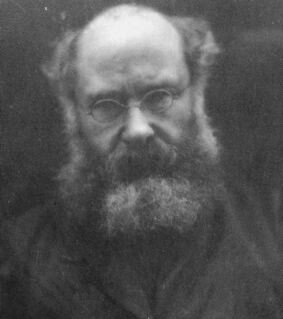 Oxford also has a nice series of mini-hardcovers called "The World's Classics." Imported from England and available at Scribner's on Fifth Avenue or through the mail from Oxford, this line laudably makes available many obscure works at not-so-reasonable prices. Some of the better Trollope titles they have are Mr. Scarborough’s Family, one of the novelist's last and most brilliant works, showing how Trollope might have dealt with Dickensian characters (whom he normally abhorred as "caricatures and not characters"); Is He Popenjoy?, a perceptive study of the everyday and the women's movement; Dr. Wortle's School, a look at prejudice; An Autobiography, a look at Trollope; and The Belton Estate, for fans of Jane Austen.
Oxford also has a nice series of mini-hardcovers called "The World's Classics." Imported from England and available at Scribner's on Fifth Avenue or through the mail from Oxford, this line laudably makes available many obscure works at not-so-reasonable prices. Some of the better Trollope titles they have are Mr. Scarborough’s Family, one of the novelist's last and most brilliant works, showing how Trollope might have dealt with Dickensian characters (whom he normally abhorred as "caricatures and not characters"); Is He Popenjoy?, a perceptive study of the everyday and the women's movement; Dr. Wortle's School, a look at prejudice; An Autobiography, a look at Trollope; and The Belton Estate, for fans of Jane Austen.
Finally, a brief footnote: Penguin, which is a bit more scholarly than Berkley, has also issued an abridgement of a Trollope work. Theirs is North America, the author's 1862 observations of the United States during a. Civil War visit. It's not a very good book, but has its curiosity value (he thought secession was the only answer to the to the war, for instance, since the North and South were culturally so different) and editor Robert Mason has cut just enough to keep the narrative's interest without making it a skeleton.